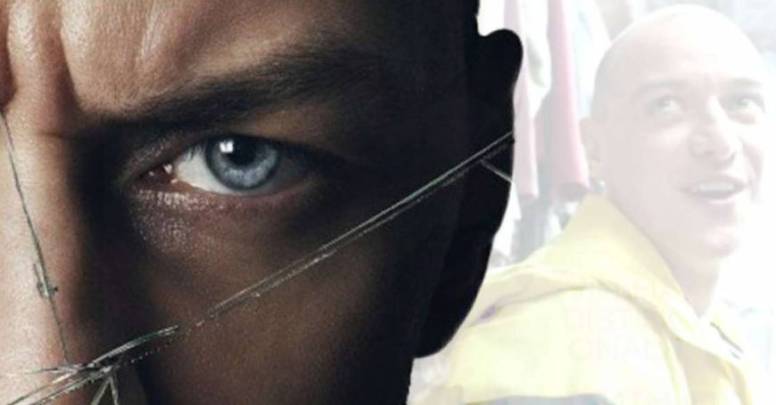
The first documented case of dissociative identity disorder (DID) was in 1584. Though not labeled such at the time, Jeanne Fery recorded her exorcism in detail (with additional details provided in the records of her exorcists), preserving documentation of symptoms that exactly match those that are found in individuals with DID today. She had multiple alters, each with their own name, identity, and identifying features and had alters that would today be described as an ISH, persecutory protectors, and child alters. Her alters were associated with actions that ranged from helping her to heal to self harm and disordered eating, were audible inside her head, and could take control of her body to allow for various actions, conversion features, and changes in knowledge and skills. The alters resulted from childhood physical and possibly sexual abuse. Jeanne Fery was actually called ”the most perfect case” of “dédoublement de la personnalité,” the most perfect case of DID, by Bourneville, the man who reissued a book about her life in 1886 (van der Hart, Lierens, Goodwin, 1996)1.
Following Jeanne Fery in 1623 was Sister Benedetta, a woman who was supposedly possessed by three angelic boys who would beat her to cause chronic pain. When they took control of her body, each would speak with a different dialect and tone of voice while using different facial expressions. Benedetta had amnesia for some of their actions, including a sexual relationship that they had initiated. Like Jeanne Fery, Sister Benedetta suffered from self harm and disordered eating. Her parents had also shown signs of dissociation and had been rumored to be possessed, and one of the “angels” was frozen at age 9, the same age at which Sister Benedetta’s father had died, her symptoms had become uncontrollable, and she had been sent to the convent (van der Hart, Lierens, Goodwin, 1996)1.
DID has a history of being mistaken for possession. After such a view was no longer acceptable, those with DID were seen as hysterics. Hysteria was seen as primarily dissociative in nature and could involve disturbances of memory, consciousness, affect, identity, and body functions (van der Hart, Lierens, Goodwin, 1996)1, the same symptoms today associated with dissociative disorders and particularly with dissociative identity disorder.
The first person to be officially diagnosed with multiple personality disorder (instead of double personality disorder as had eventually come into use in France) was Louis Auguste Vivet in 1882. Louis was physically abused and neglected as a child and had frequent “attacks of hysteria.” One such attack occurred when he was 17 and bitten by a snake. He lost use of his legs for almost one year, and when the use returned after a 50 hour attack, he didn’t remember any of the physicians who had been treating him in an asylum for the last month or any of his fellow patients. His manner, morals, and appetite were different as well. Following additional attacks, the next year, his character would change from impulsive and dangerous to calm and gentle. In 1884, he had another attack that left him gentle of manner but unable to walk, and yet another attack returned the use of his legs but left him quarrelsome and inclined to steal as he had done as a child in order to survive. Amnesia for intervals spanning episodes was noted. By 1888, he had been recorded as having 10 personality states, each of which were different in character, memory, and somatic symptoms. In 1885, integration of the youngest alters began (Faure, Kersten, Koopman, & Van der Hart, 1997)2.
Interestingly, the earliest reports by Louis’s treating physicians acknowledged only two of his eventually discovered alters as having presented while he was first hospitalized, though later examination of the hospital reports clearly indicated the presence of at least three alters. It is thought that Louis’s case was forced to fit the mold of double personality disorder for as long as possible. The same had happened to Azam’s patient Felida X. Though Azam recognized that Felida had three personalities, he publically recognized only two in order to make her case fit the only diagnosis he could give it (Faure, Kersten, Koopman, & Van der Hart, 1997)2.
There’s always been a history of professionals attempting to diagnose DID as another more prominent disorder of the time, even if to do so was to willingly ignore information. Even after DID became a valid diagnosis, it was still often mistaken for other disorders. In 1918, it was first acknowledged in the predecessor of the DSM under Hysterical Psychoneuroses, a subgroup of Psychoneuroses and Neuroses that included alternate states of consciousness acting on normally unknown desires, amnesia, and sensory and motor disturbances (“Statistical Manual for the use of Institutions for the Insane,” 1918)3; this again placed DID under a hysteria label. Additionally, in 1910, Bleuler had introduced the term schizophrenia, and in 1927, the reported number of cases for this disorder rose dramatically, matched by a decrease in the diagnose of DID. One reason for this is that the original description of schizophrenia actually included multiple personalities! Many of those diagnosed and treated as having schizophrenia should have been diagnosed as having DID, but because schizophrenia was the more popular diagnosis, that was what was officially recognized (Rosenbaum, 1980).4
It wasn’t until Ferenczi’s “Confusion of Tongues” paper in 1932/1949 that dissociation and subsequent splitting of the personality were explicitly linked to childhood abuse. However, at the time, any theory involving the subconscious mind was unpopular, and few paid attention to what Ferenczi had discovered. As well, the schizophrenia diagnosis still included and dominated over the DID diagnosis at this time. It wasn’t until shell shock was noted in soldiers and then recognized as posttraumatic stress disorder (PTSD) in abused women and children that attention finally returned to dissociation. (Howell, 2011).5 After this point, it was specific case studies that brought attention to the disorder, starting with that of Clara Norton Fowler (“Christine Beauchamp,” 1898-1904) and followed by that of Chris Sizemore (Eve).
1 Van der Hart, O., Lierens, R., & Goodwin, J. (1996). Jeanne Fery: A sixteen century case of Dissociative Identity Disorder. The Journal of Psychohistory, 24(1).
2 Faure, H., Kersten, J., Koopman, D., & Van der Hart, O. (1997). The 19th century DID case of Louis Vivet: New findings and re-evaluation. Dissociation, 2(2).
3 Statistical Manual for the use of Institutions for the Insane. (1918). In Statistical manual for the use of institutions for the insane. New York: American medico-psychological association/National committee for mental hygiene.
4 Rosenbaum M. (1980). The role of the term schizophrenia in the decline of diagnoses of multiple personality [Abstract]. Archives of General Psychiatry, 37(12), 1383-5. DOI: 10.1001/archpsyc.1980.01780250069008
5 Howell, E. (2011). The Dynamic Unconscious and the Dissociative Structure of the Mind. In Understanding and treating dissociative identity disorder: A relational approach. New York: Routledge






















































